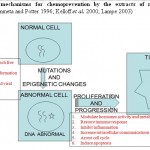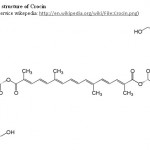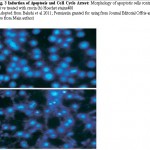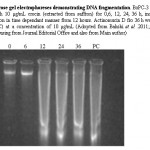Extracts of Kashmiri Saffron in Service to Human Race and Present Ground Realities
Mohammad Imran Kozgar1 * and Neelofar Jabeen2
1
Mutation Breeding Laboratory, Department of Botany,
Aligarh Muslim University,
Aligarh,
202 002
India
2
Department of Education,
Government of Jammu and Kashmir,
Srinagar,
India
DOI: http://dx.doi.org/10.12944/CWE.7.2.12
Copy the following to cite this article:
Kozgar M.I, Jabeen N. Extracts of Kashmiri Saffron in Service to Human Race and Present Ground Realities. Curr World Environ 2012;7(2):275-280 DOI:http://dx.doi.org/10.12944/CWE.7.2.12
Copy the following to cite this URL:
Kozgar M.I, Jabeen N. Extracts of Kashmiri Saffron in Service to Human Race and Present Ground Realities. Curr World Environ 2012;7(2):275-280. Available from: http://www.cwejournal.org/?p=2867
Download article (pdf)
Citation Manager
Publish History
Select type of program for download
| Endnote EndNote format (Mac & Win) | |
| Reference Manager Ris format (Win only) | |
| Procite Ris format (Win only) | |
| Medlars Format | |
| RefWorks Format RefWorks format (Mac & Win) | |
| BibTex Format BibTex format (Mac & Win) |
Article Publishing History
| Received: | 2012-07-12 |
|---|---|
| Accepted: | 2012-09-17 |
Cancer represents the largest cause of the mortality, which claims over 6 million lives each year, in present world (Abdullaev 2012). Insensitivity of cancer types to most of the oncological therapies such as chemotherapy, radiotherapy and immunotherapy (Ghaneh et al. 2007, Sarkar et al., 2007) has forced to strengthen new therapeutic strategies to combat this deadly form of disease. A promising strategy to cure cancer is chemoprevention through natural agents. Natural agents, extracted from diverse sources like that of plants, had been extensively used for curing many ailments including cancer. Natural products and related drugs are used to treat 87% of all categorized human diseases infectious and non-infectious (Chin et al. 2006). Molecular epidemiological studies have provided evidence that an individual’s susceptibility to cancer like diseases is modulated by both genetic and environmental factors via. their interaction and their affect on enzymes involved in the metabolism of carcinogens (Gattoo et al. 2011). Chemoprevention may act to cure cancer as per the possible mechanism illustrated in Fig. 1. One of the constituents which have shown the results of inducing apoptosis is Crocin (Fig. 2) extracted from the Kashmir Saffron, Crocus sativus L. (Bakshi et al. 2010)
Outline of kashmirri saffron
Kashmir, one of the biotic provinces of the Himalayas, supports a rich and unique floristic diversity, including at least 450 known medicinal plants species (Jabeen and Kozgar 2011) including saffron. Saffron is cultivated commercially to limited extent in India and mostly confined to this part (Kashmir), however, it is also found to be cultivated in Azerbaijan, France, Greece, Iran, Italy, Spain, China, Israel, Morocco, Turkey, Egypt, and Mexico with high commercial cost outputs (Negbi 1999). In Kashmir saffron cultivation is mostly seen in the table-land of Pampore, at the outskirts of Srinagar city, which is well known for quality saffron and represents one of the major saffron-producing areas of the world, and infact some authors reflect that the saffron originated from Kashmir from where Phoenicians introduced it to the Greek and Roman world (Alberini 1990; Winterhalter and Straibinger 2000) and to Britain world in XIV century (Caiola and Canini 2010).
Constituents and usage of Kashmiri saffron
Saffron belongs to the iris family (Iridaceae) and constitutes different chemical agents like crocin, crocetin anthocyanin, carotene and lycopene (Abdullaev and Espinosa-Aguirre, 2004), especially in its stigma parts of the flower (Giaccio et al., 2004). These constituents are known to have various usages in relation to health related problems. They have pharmacological effects on different illness, including anti-tumor effects by inhibition of cell growth (Abdullaev 1993, Dhar et al. 2009). Bakhsi et al. (2010) has demonstrated that the crcocin extracted from the saffron cultivated in Pampore belt of Kashmir vale has potential role in inducing cell cycle arrest and henceforth could play a key role in cancer treatments (Fig. 3). In addition, the extract of this saffron has also revealed to inhibit cell proliferation (Fig. 4) and modulate signal transduction. All these factors viz. inducing apoptosis, inhibit proliferation of cell and/or modulating signal transduction are currently used in cancer treatment and Guzman (2003) reported that the combination of multi-chemopreventive agents or agents with multiple targets is considered to be more effective than a single agent.
 |
Figure 1: Possible mechanisms for chemoprevention by the extracts of medicinal plants Click here to View figure |
 |
Figure 2: Chemical structure of Crocin Click here to View figure |
Cultivation problems and strategies for exploring saffron sustainably
Over than three decades from now the land under cultivation of saffron in Pampore (Kashmir) region is shrinking rapidly due to encroachment of local people. Increase in urbanization and presence of anthropogenic pressures are other problems. In addition, the genetic diversity is not upto so much extent in this particular plant as it reproduces vegetatively through corms. Due to absence of ample genetic diversity saffron plants are constantly under siege by a multitude of disease-causing organisms including bacteria, fungi, viruses and nematodes (Ahrazem et al. 2010). In addition, limited availability of daughter corms is also one of the major handicaps for the expansion of acreage under saffron (Sharma and Piqueras 2010).
In order to get full benefit from the extracts of the saffron plant of Kashmir cultivated one, various techniques and sustainable approached has to be introduced. Techniques like induced mutagenesis and tissue culture has to be implemented and reserving the land for its cultivation has to be promoted. Cultivation in indoor pots and promotion of its cultivation in kitchen gardens has to be enhanced. Hussiani et al. (2010) has advocated the need for using quality planting materials and a sprinkler irrigation system as one of the major means to enhance the production.
 |
Figure 3: Induction of Apoptosis and Cell Cycle Arrest Click here to View figure |
 |
Figure 4: Agarose gel electrophoreses demonstrating DNA fragmentation Click here to View figure |
Conclusion
In order to obtain high economy from the saffron parts grown in Kashmir new areas should be covered under cultivation. Analysis of different constituents and their probable applications in the healthcare using cutting edge techniques, in a sustainable way, be promoted from all corners. Looking for procedures and their amplifications should be increased, which directly or indirectly enhance the genetic diversity among the cultivars of saffron. Encroachment in the field of saffron cultivated belt, either for domestic life or for commercial purposes, should totally banned. Biophysiological studies for various types of stresses especially cold stress be analyzed to develop the variety resistant to cold, which is mostly following the later stages of saffron growth period.
References
- Abdullaev FI (1993) Biological effects of saffron. Biofactors 4, 83-86
- Abdullaev FI (2002) Cancer chemopreventive and tumoricidal properties of saffron (Crocus sativus L.). Experimental Biology and Medicine 227, 20-25
- Abdullaev FI, Espinosa-Aguirre JJ (2004) Biomedical properties of saffron and its potential use in cancer therapy and chemoprevention trials. Cancer Detection and Prevention Journal 28, 426-32 http://dx.doi.org/10.1016/j.cdp.2004.09.002
- Abdullaev FI, Rivera LR, Roitenburd BV, Espinosa AJ (2000) Pattern of childhood cancer mortality in Mexico. Archives of Medical Research 31(5), 526-531. http://dx.doi.org/10.1016/S0188-4409(00)00094-1
- Alberini M (1990) Saffron: sapore e colore. Lo zafferano. Proceedings of the International Conference on Saffron (Crocus sativus L.). L’Aquilla, Italy, pp 39-46
- Bakshi H, Sam S, Rozati R, Sultan P, Islam T, Rathore B, Lone Z, Sharma M, Triphati J,Saxena RC (2010) DNA Fragmentation and Cell Cycle Arrest: A Hallmark of Apoptosis Induced by Crocin from Kashmiri Saffron in a Human Pancreatic Cancer Cell line. Asian Pacific Journal of Cancer Prevention 11, 675-679
- Caiola MG, Canini A (2010) Looking for saffron’s (Crocus sativus L.) parents. In: Husaini AM (Ed) Saffron. Functional Plant Science and Biotechnology 4 (Special Issue 2), 1-14
- Chin YW, Balunas MJ, Chai HB, et al. (2006). Drug discovery from natural sources. The AAPS Journal 8, 239-53.
- Dhar A, Mehta S, Dhar G, Dhar K, Banerjee S, Veldhuizen PV, Campbell DR, Bnerjee SK (2009) Crocetin inhibits pancreatic cancer cell proliferation and tumor progression in a xenograft mouse model. Molecular Cancer Therapeutics 8(2), 315-323. http://dx.doi.org/10.1158/1535-7163.MCT-08-0762
- Gatoo MA, Siddiqui M, Farhan AK, Kozgar MI, Owais M (2011). Oral cancer and gene polymorphism: International Status with special reference to India. Asian Journal of Biochemistry 6(2), 113-121. http://dx.doi.org/10.3923/ajb.2011.113.121
- Ghanesh P, Costello E, Neoptolemos JP (2007) Biology and management of pancreatic cancer. Gut 56, 1134-1152
- Giaccio M (2004). Crocetin from saffron: an active component of an ancient spice. Critical Reviews in Food Science and Nutrition 44, 155-72. http://dx.doi.org/10.1080/10408690490441433
- Guzman M (2003) Cannabinoids: Potential anticancer agents. Nature Reviews Cancer 3, 745-755. http://dx.doi.org/10.1038/nrc1188
- Jabeen N, Kozgar MI (2011) The Genus Aconitum in Kashmir Himalaya. LAP Lambert Academic Publishing GmbH & Co Saarbrücken Germany.
- Kelloff GJ, Crowell JA, Steele VE, Lubet RA, Malone WA, Boone CW, Kopelovich L, Hawk ET, Lieberman R, Lawrence JA, Ali I, Viner JL, Sigman CC (2000) Progress in cancer chemo-preventionm: Development of diet-derived chemopreventive agaents. Journal of Nutrition 130(Suppl), 467S-471S
- Lampe JW (2003) Spicing up a vegetarian diet: Chemopreventive effects of phytochemicals. American Journal of Clinical Nutrition 78(Suppl), 579S-583S
- Negbi M (1999). Saffron cultivation: past, present and future prospects. In: Negbi M, Ed. Saffron Crocus sativus L. Amsterdam: Harwood Academic Publishers, pp 1-19.
- Sarkar FH, Banerjee S, Li YW (2007). Pancreatic cancer: Pathogenesis, prevention and treatment. Toxicology and Applied Pharmacology 224, 326-36. http://dx.doi.org/10.1016/j.taap.2006.11.007
- Steinmetz KA, Potter JD (1996) Vegetables, fruit, and cancer prevention: A review. Journal of American Dietetic Associatin 96, 1027-1039. http://dx.doi.org/10.1016/S0002-8223(96)00273-8
- Winterhalter P, Straubinger M (2000) Saffron-renewed interest in an ancient spice. Food Reviews International 16, 39-59. http://dx.doi.org/10.1081/FRI-100100281
- Sharma KD, Piqueras A (2010) Saffron (Crocus sativus L.) Tissue Culture: Micropropagation and secondary metabolite production. In: Husaini AM (Ed) Saffron. Functional Plant Science and Biotechnology 4 (Special Issue 2), 15-24
- Ahrazem O, Rubio-Moraga A, Castillo-López R, Mozos AT, Gómez-Gómez L (2010) Crocus sativus Pathogens and Defence Responses. In: Husaini AM (Ed) Saffron. Functional Plant Science and Biotechnology 4 (Special Issue 2), 81-90
- Husaini AM, Hassan B, Ghani MY, Teixeira da Silva JA, Kirmani NA (2010) Saffron (Crocus sativus Kashmirianus) cultivation in Kashmir: Practices and problems. . In: Husaini AM (Ed) Saffron. Functional Plant Science and Biotechnology 4 (Special Issue 2), 108-115






